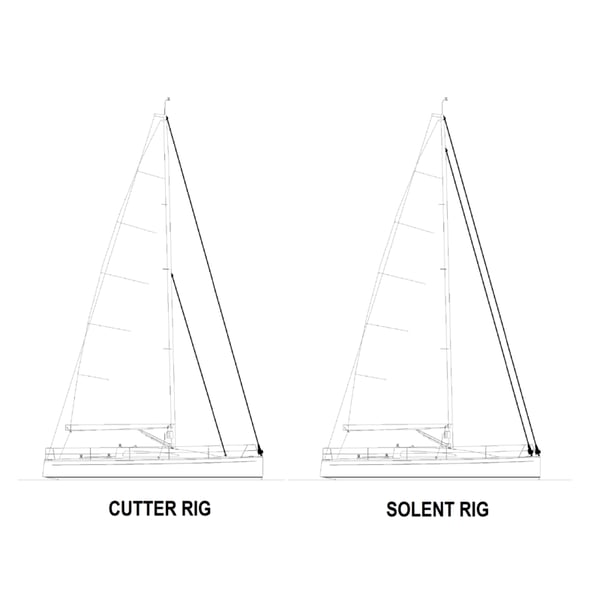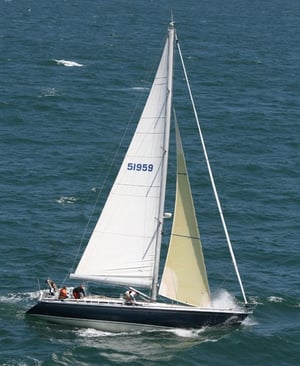 Here at Upffront, we are aware that many people are searching for the perfect bluewater cruising set up.
Here at Upffront, we are aware that many people are searching for the perfect bluewater cruising set up.
Two popular options for off-shore cruising are the cutter rig and the solent rig, both sporting their own pros and cons.
The cutter rig utilises two headsails that sit relatively far apart from each other: a high-cut yankee connected to the main forestay (high clew to avoid the foot catching in waves when reaching), and a staysail connected to the inner forestay (the lower-clewed staysail catches the wind the high-cut yankee does not). Both sails can be used and tacked at the same time.
The solent stay, on the other hand, sits directly behind the main forestay. It allows the use of two different sized genoas but only one is used at any one time, and the forward genoa needs to be furled during a tack.
Unsure which to choose? In this two-part series, we will provide some views on both setups to aid your choice of rig.
First, we will look at the cutter rig.
One advantage is that, compared to a single large genoa, the two smaller headsails of the cutter rig produce a lower centre of gravity and therefore heeling angle. This means that the boat sails more upright and reduces the risk of capsizing, facilitating easier handling in varying weather conditions.
 |
| Image Credit: Butch Ulmer, UK Sailmakers |
A second advantage of the cutter rig is that, if winds are high and you want to reduce power, the yankee can be furled away completely, leaving just the staysail which can be used with a deeply reefed main. This can facilitate a satisfactory heave-to, which is otherwise unlikely with a boat that has a partially rolled genoa on the main forestay.
Traditionally the cutter rig - which thrives in reaching conditions - has had limitations on other points of sail. For example, close hauled the staysail can be stalled by the forward jib, and visa versa running downwind. However, this is where modern performance sailing techniques can help to revitalise this classic rig setup.
With the addition of a code zero and an asymmetric to a cutter rig you get very close, in our opinion, to the perfect cruising setup. In light airs, beating and reaching, where the traditional cutter rig may lack power, the code zero will provide the perfect boost. As windspeed increases, furl the code zero and you are in the optimum zone for the yankee and staysail. With more wind, furl the yankee and run with the staysail and reefed main. As you crack off the wind, the code zero provides all the power you would need, up to moderate wind speeds, and then downwind you unfurl the asymmetric.
Upffront would advocate that sailing your downwind angles with an asymmetric is faster, more efficient and more comfortable than dead-downwind sailing. However, if you really want to keep those twin poles, and go downwind in a straight line, then poling out the code zero with the yankee is also an option!
As you may be able to tell, Upffront is a fan of a modern cutter rig, however there are some downsides to consider. If your boat is not already setup for a staysail, the retrofit is more complicated than for a solent rig. Adding an inner forestay requires an attachment point for the new stay as well as a halyard sheave on the front of the rig but also, importantly, additional backstays to support the new, inner forestay load.
At the end of the day, the right choice for you and your boat will come down to a number of different, competing priorities: your existing rig and sail wardrobe setup, sailing style and of course budget!
Read Part two here where we look at the Solent Rig in more detail
If you have any questions about code zero and asymmetric furlers, please feel free to email us at support@upffront.com, or click the link below to see our full range:



